#foresia
Explore tagged Tumblr posts
Text

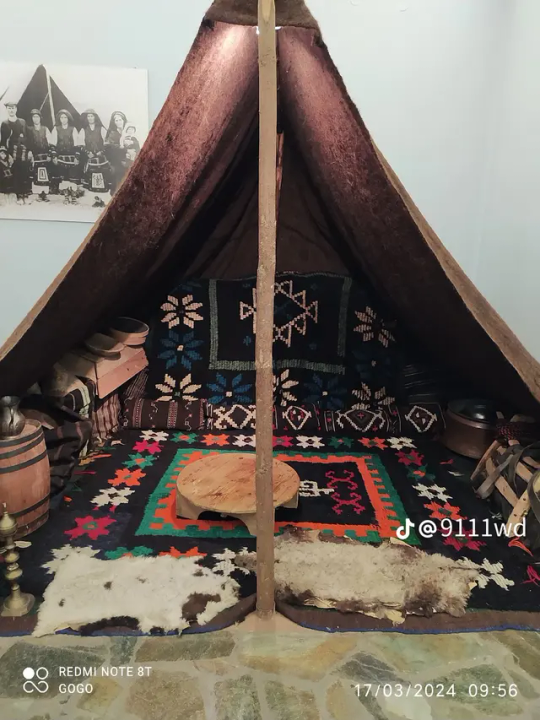
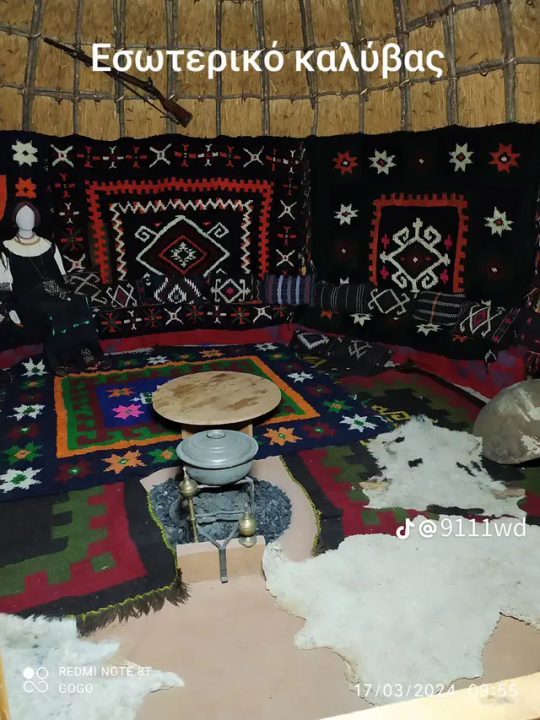
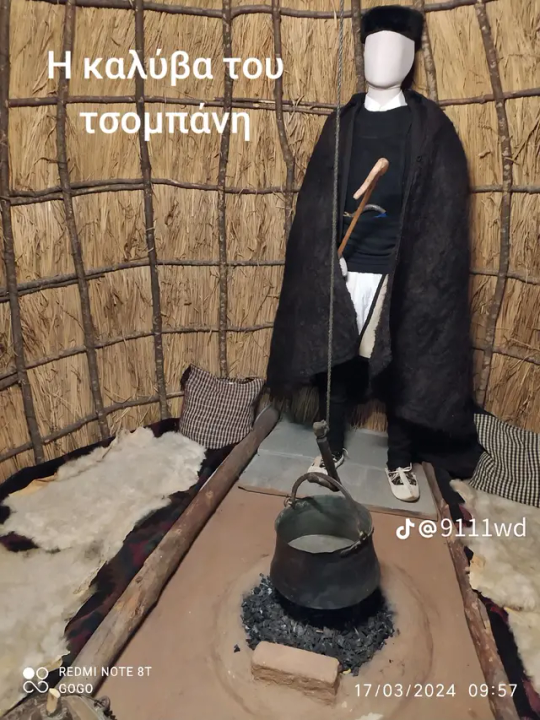
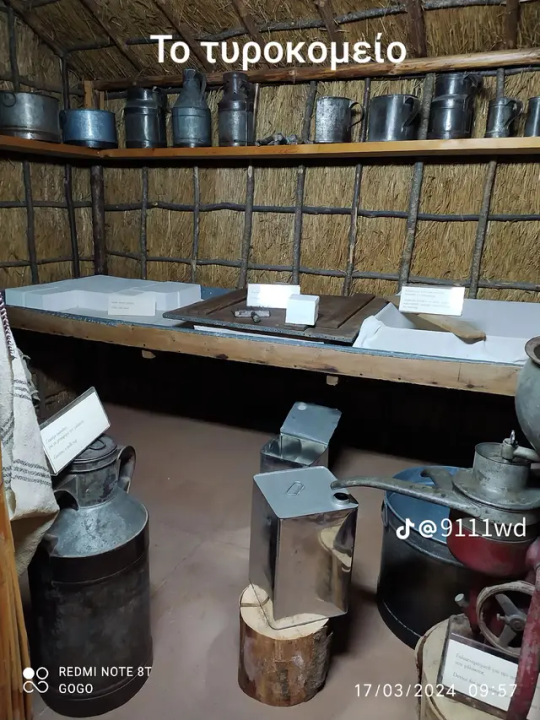
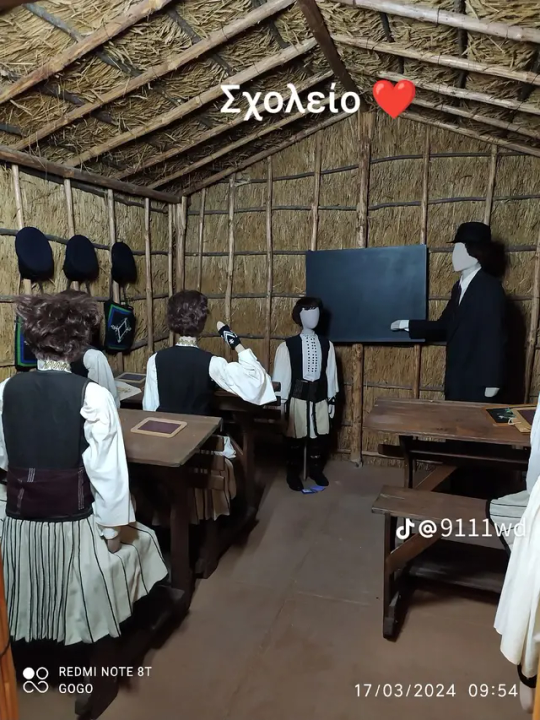
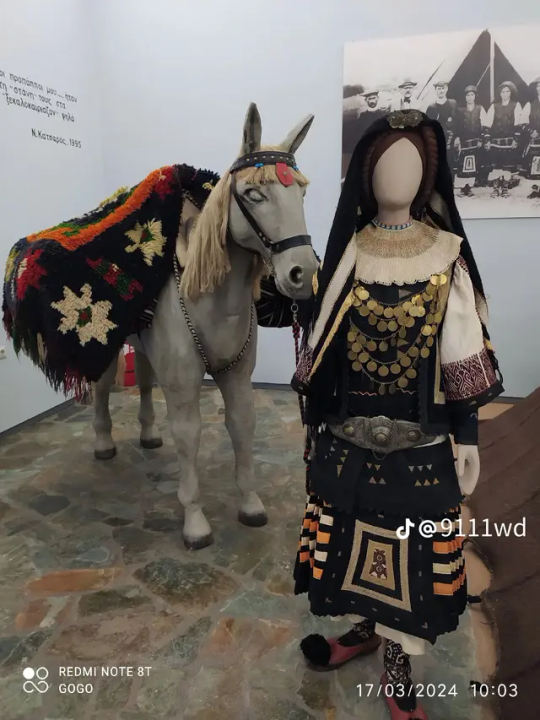
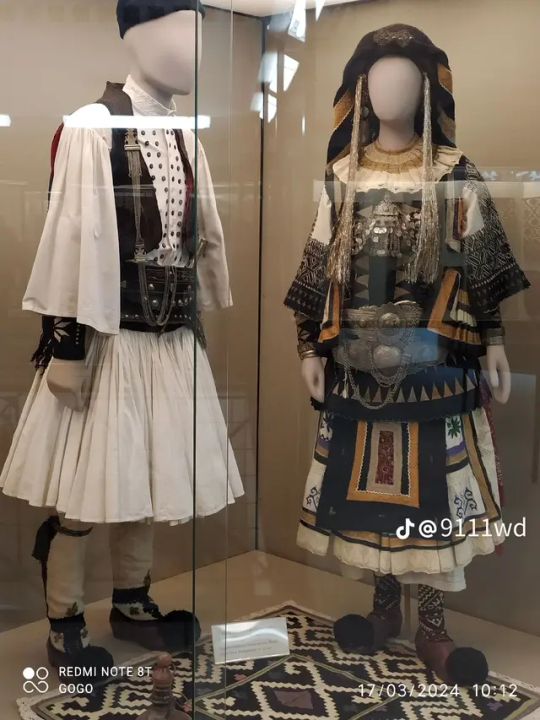

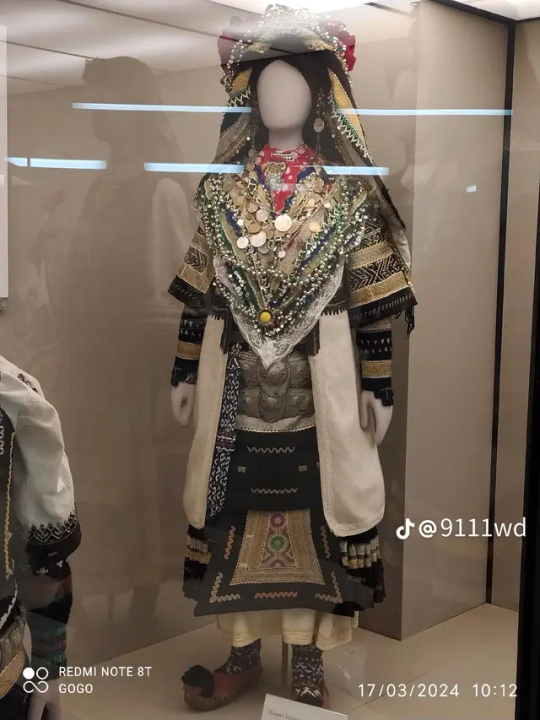
Gogo took some pictures from the Museum of Sarakatsanoi in Serres 🖤❤️🤍
1. A Sarakatsaniko village
2/3. Interiors
4. Shepherd's hut
5. Fromagerie
6. School
7/8/9. Clothing
10. Bridal clothing
42 notes
·
View notes
Text

Hellenic traditional clothing of Thrace.
As far as I know this "foresia" is not from a specific Thracian village, but rather a generic representation of the motif the various Thracian villages followed.
Note the bead choker that some Thracian villages produced.
#Hellas#Hellenismos#Thrace#Thracian#traditional clothing#historical clothing#historical fashion#history#textiles
290 notes
·
View notes
Photo

Un Rugido de Autodeterminación: "Pueto Pa' Mi" de FORESIA - https://wp.me/p4pCgM-5oT
Desde República Dominicana, FORESIA nos entrega un himno de superación personal que mezcla Nu Metal, Hip Hop y Hardcore, dejando una marca indeleble en la escena del Rap Metal y Metalcore.
1 note
·
View note
Photo

#Κρητική #Φορεσιά #Βεστάκης #Σφακιανή #παραδοσιακή #Cretan_tradition #Vestakis #Sfakiani #foresia #traditional #custom #greekdancers #Cretandancer #Cretandance #collage #instaphoto #elena_fouraki #ενωση_κρητων #Κερατσινιου https://www.instagram.com/p/B4yDzHJj26U/?igshid=14k0i9sg0bmbw
#κρητική#φορεσιά#βεστάκης#σφακιανή#παραδοσιακή#cretan_tradition#vestakis#sfakiani#foresia#traditional#custom#greekdancers#cretandancer#cretandance#collage#instaphoto#elena_fouraki#ενωση_κρητων#κερατσινιου
0 notes
Photo
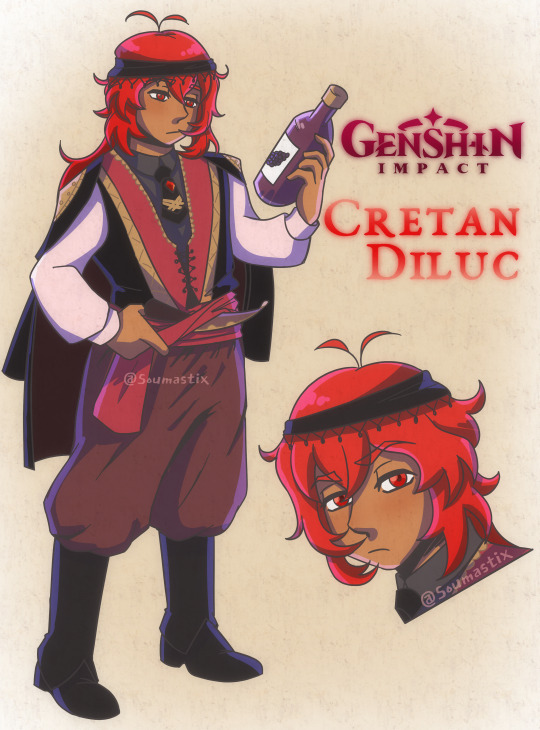
When I found out that Diluc owns a winery I immediately connected the dots! He’s my Cretan king and I love him very much~ 😍😍
Concept: In an alternate universe, Diluc is a successful wine maker from Crete!😊😊
(This outfit is inspired by the male traditional costume originating from Crete, Greece)
#genshin impact#genshin impact fanart#genshin impact diluc#genshin diluc#diluc ragnvindr#greek culture#greek foresia#soumaart#i followed the advice 'make the content you want to see' so i hit one of my faves with a hellenization beam and now he is greek#i mean come one guys#he is a wine maker!!
12 notes
·
View notes
Text
Aphrodite as 100 years of Greek fashion (part 1)
Before writing this long essay post, I just wanted to give props and citations of information to both @alatismeni-theitsa and @greek-mythologies for introducing me a lot of things about Greek arts, culture, and its past history over several months now; and that this idea was also partly inspired from the common idea of modern Hellenic Polytheists as well: that “the gods are often enormously powerful beings who don’t have definitive physical bodies, and they often manifest/appear to whomsoever they wish and in any form that they wish to.” To me, since both Aphrodite and Ares have always been appeared as local Mediterranean Greeks in modern-day clothing fashion, here are some photos of what the couple themselves would wear/ dress like for over past 100 years ago.
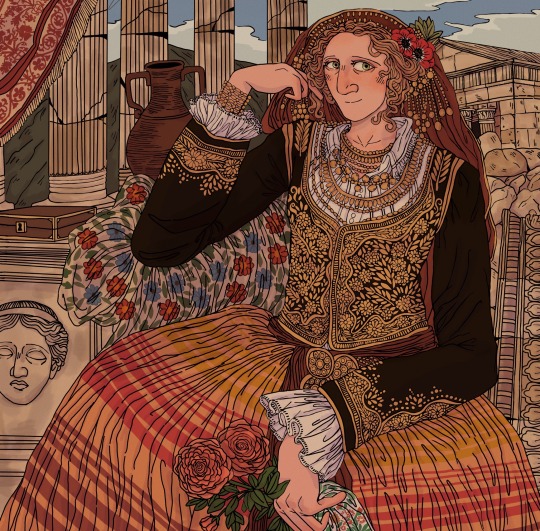
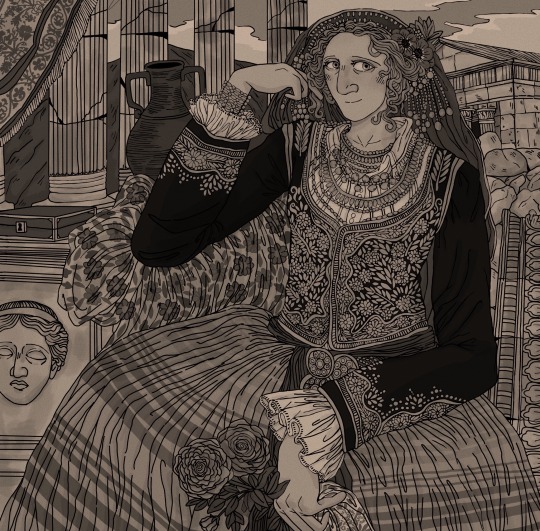
1910s:
During this time and era, Western European fashion from the Edwardian era haven't reached to most of the Greek population, yet; and only to be worn by the royal aristocratic class and the affluent wealthy class. It was much more transition period due to the effects of Second Industrial Revolution, to be exact. Villagers who lived in both rural and developing areas back then often wore the traditional clothing (paradosiaki foresia), consisted of a simpler attire: shirt, skirt, apron, and handkerchief for women. (Even though this is not really a case for all the affluent wealthy class, as sometimes they wore traditional fashion or a fusion mix between both modern and traditional, in some occasions.) Aphrodite, in this case here, as the goddess of sex, love and beauty, wore “the traditional folk kaprasia bridal dress” from the island of Cyprus as usual, with the traditional ornate golden jewelry that Greek Cypriot families often passed down from generations to generations.
Historically, this is also the time when all countries in the Balkan region (Greece, Bulgaria and Serbia) forming allies together in order to help smaller European territories to gain independence from the ever slowly-dying Ottoman Empire; but later turn hostile towards to each other due to the partitioning of their conquests. The political Greek royal family and the Greek Prime Minister also began to ripping the Greek society apart; as Konstantinos I was married to Kaiser Wilheim II’s sister while the Greek government Eleftherios Venizelos was allied with the Allied Powers, British Empire, and France. This period of time, also marked “one of the largest chain of tragedies and sadnesses within the modern Greek history”; as the famous Greek genocides were being committed in the Anatolia region of Turkey, on the basis of their religion and ethnicity. With the fall of the Ottoman Empire and the assassination of Franz Ferdinand of Austro-Hungarian Empire, and other problem factors that related to “Socio-Darwinism” and “colonialism” across Africa and Asia, World War I begins and Greece declares war on the Central Powers in 1914, ending three years of neutrality by entering World War I alongside Britain, France, Russia, and Italy.


1920s:
During this time and era, Europe just formed a fragile peace treaty together and WW1 had made a fundamental and irreversible effect on society, culture, and fashion; where women’s fashion were all often associated with the ideas of “letting loose”, “breaking free” and “rebel against” the physical and social constraints of the previous century. Letting go away from the extravagant and restrictive styles of the Victorian and Edwardian periods, and towards a more simple, more casual chic, and looser clothing which revealed more of the flowing silhouette, the arms and the legs. This idea might have originally started in Paris and popularized by Gabrielle Chanel, paralleling with the idea of “women’s participation on the war, have the right to vote and entering the workforce to win her own liberty” -which later spread to many parts of urban cities across the Americas and Western Europe. Despite this, since Greece has always been much more socially-culturally modest and much more conservative than other Northern European countries during this time: it is either that Greek women embraced these new long flowy dresses where their skin was less revealed, or that women still embraced the dresses from the past Victorian-Edwardian eras. (But I personally think that Aphrodite herself would passionately embraced these new minimalist flapper-like looks, to be honest.)
Aphrodite’s dress and hairstyle in here was inspired from Princess Aspasia Manos of Denmark and Greece, and Queen Victoria Eugénie of Battenberg and Spain; since during this time, high end fashion trends were now become much more cheaper and affordable to people who coming from the middle working classes. The jewelry that she wore around her neck were the strands of pearls - one of the common characteristic that was popularized by Gabrielle Chanel during that time and had always been considered as “the sacred stone of love” to the goddess herself back in the ancient times- and a necklace of red coral beads. Her once ancient golden jewelry is now remodeled and incorporated with new gemstones, which was a kind of common case during that time, too. Her husband, the god Ares here wore the usual local traditional fustanella from the region of Thessaloniki-Macedonia that you guys had saw in my previous drawings. The architectural background was based on one of the oldest and the most beautiful neighborhoods in modern city of Athens, Plaka and several other neoclassical architectural pieces around the city’s center.
#aphrodite#ares and aphrodite#ares#mars and venus#mars#venus#modern day greek mythology#100 years of fashion#100 years of beauty#greek history#paradosiaki foresia#my art#kaprasian bridal dress#100 years of Greek fashion#1910s fashion#1920s fashion
111 notes
·
View notes
Photo
that Cretan man's attire complete with hookah and the ornate designs on that dress from Heraklion (Candia), Crete ❤️










Greece Fashion Week: Vintage photos of Greece in the 1920’s (part 2)
1. Actress in peasant dress from Thessaly 2. A woman works outside her home in Crete 3. A woman in traditional Greek dress knits sitting outside her home, Aivali 4. A peddler with his wares passes through the village, Gastouri, Corfu 5. A muleteer stands in the woods in Crete 6. A girl husks corn in a field on the Salonika Kozani Road, Microghouzi 7. A hunter lies under an olive tree on the island of Crete 8. A man in national costume smokes a waterpipe, Crete 9. A man poses in the national costume of Crete 10. A maid of Candia poses in costume
540 notes
·
View notes
Note
Hello! Do you know where i can find images/photos of the traditional greek dress that is worn thira/santorini?
Googling in Greek "Παραδοσιακή φορεσιά Σαντορίνης" and "Θήρας/Σαντορίνης" will do the trick if you want to research more. When English prompts give unrelated results, switching to Greek is a good idea ;) (You can google translate your prompts to Greek)
Luckily for you, I found the 2nd Ethnological Presentation of Traditional Costumes in Greece, organized by Stamatina Xiarhou. I think it's a very reputable source, because the organizers are Therans/Santorinians.
The presentation of the Santorini/Thera dresses starts from 1:37: 51 and lasts until 1:45:00 . Here's the video and it's already timestamped. The small letters on the labels show what each of them is. "ΓΙΟΡΤΙΝΗ" and/or "ΚΑΛΗ" is festive and formal, and "KAΘΗΜΕΡΙΝΗ" is the everyday one. You can more clearly see the text near the end of each presentation when the camera pans to the standing models. For example, peach/orange, yellow and red are the festive ones, (red is the "good one" and festive) and the first kids one is festive.
Here is a description of the dress in Greek that I think can be translated well online. If you have any trouble feel free to message me and I will help!
Also a couple photos for you:



source

source


A simpler presentation - source


source
As you can see there are variations and even differences between occasions and financial classes.
________________________________________________________
guys, if my blog has helped you in any way please consider my ko-fi 💙
13 notes
·
View notes
Photo
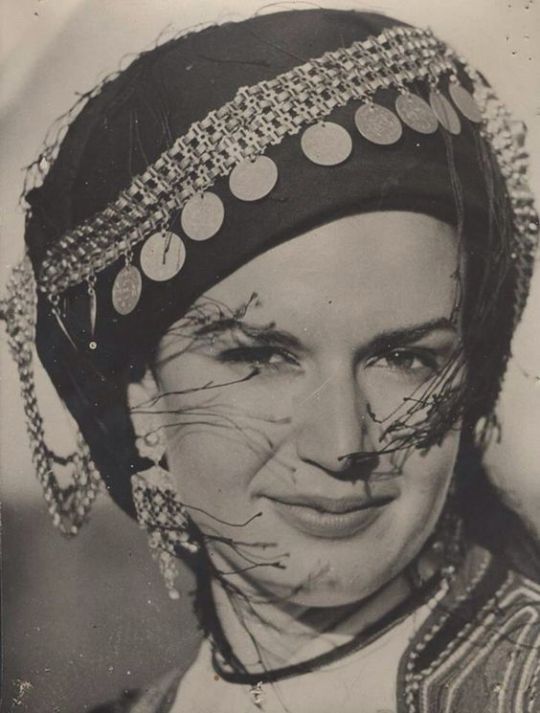

Traditional clothing of Thessalia, Greece
Karagouna
Trikala
3 notes
·
View notes
Photo
Why not for the wedding itself as well! They look regal !





Dimitra and Panagiotis, a Greek American couple, chose to honour their Sifnian roots by dressing with the island’s traditional attire for their pre-wedding photoshoot.
Photography: Giannis Kontos Make-up: Athena Podene The traditional costumes belong to Yannis Antartis’ private collection.
129 notes
·
View notes
Text
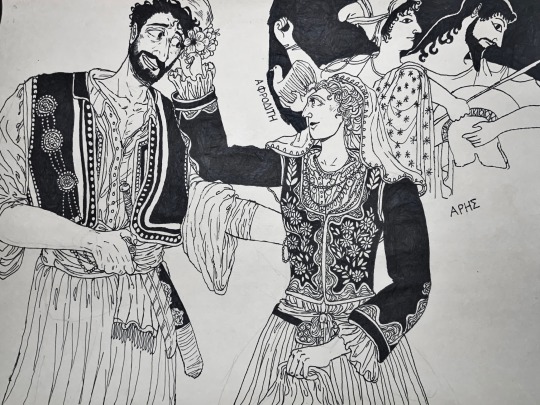
“To look at him and the way he was shaped was like looking at the immortals.
When Aphrodite, lover of smiles, saw him, she fell in love with him.
A terrible desire seized her in her phrenes
She went to Cyprus, entering her temple fragrant with incense, to Paphos. That is where her sacred precinct is, and her altar, fragrant with incense.
She went in and closed the shining doors.
Then the Kharites [‘Graces’] bathed her and anointed her with oil — the kind that gives immortality, glistening on the complexion of the gods, who last for all time.”
- Homeric Hymn to Aphrodite translated by Gregory Nagy
A bit of a personal gift for @alatismeni-theitsa, since she had been taught me a lot of informative things and little interesting facts about Greece lately-in its own culture, traditions, and history. (And that we realize that how many similarities that we had, between the cultures of Greek and Vietnamese.) So here it is, thinking of drawing Ares and Aphrodite, again; but much more in the modern traditional Greek clothes. As for me, personally, not only that they were once the gods of the Ancient Greek, but they're still the gods of modern Greece, now. And they will be eternally associated with Greece forever since. They will forever live with us within our heads and hearts, and through the stories that told from generation to generation.
In here, Ares wore a military fustanella dress that comes from the region of northern Greece (perhaps somewhere near the region of Northern Macedonia and Thrace; since he had always been associated with the military aspects as ”the god of war”; and the barbarians of the north). While his wife, the goddess Aphrodite wore the traditional Kaprasian bridal dress that comes from the urban areas of Cyprus - her home and her birthplace. (And it’s a bit similar to Amalia dress comes from the mainland Greece, and that a lot of traditional wedding dresses were also traditional festival dresses, after all.)
The picture of them behind was coming from the attic red figure kylix - their own Archaic depiction that located in National Archaeological Museum of Tarquinia, Italy.
#ares and aphrodite#mars and venus#ares#aphrodite#mars#venus#homeric hymns#i know that hymn is dedicated to venus and anchises but it kind of perfect with aphrodite and ares too#kaprasian bridal dress#fustanella greek#my art#paradosiaki foresia
65 notes
·
View notes
Text
Φορεσιές της Πελοποννήσου: Ταξίδι μέσα στον χρόνο
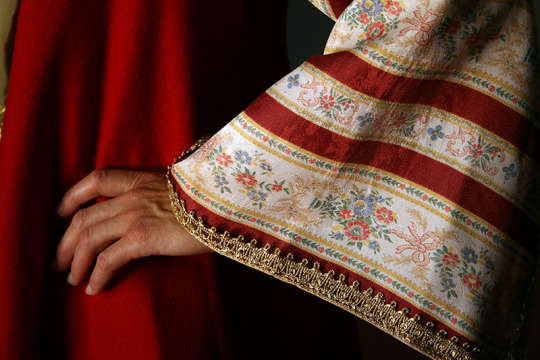
Πως μπορεί κάποιος να γνωρίσει μια περ��οχή καλύτερα; Μία ματιά στον παρελθόν της και στην τότε καθημερινότητα της, βοηθούν στην καλύτερη κατανόηση του χαρακτήρα της περιοχής αυτής. Μέσα από τις φορεσιές της Πελοποννήσου, θα μάθουμε για τη νοοτροπία των ανθρώπων ,την ενασχόληση τους, τις γιορτές και τα έθιμα τους. Θα γνωρίσουμε το κλίμα των περιοχών, τον πλούτο που διέθεταν αλλά και την ιστορία τους. Περισσότερη έμφαση θα δοθεί στις γυναικείες φορεσιές της Πελοποννήσου, αφού μέσα από αυτές αντλούμε τα περισσότερα στοιχεία.
Τζουμπές: Η ενδυμασία της Τσακωνιάς

Πηγή:http://www.tsakonianarchives.gr Ο τζουμπές αποτελεί την παραδοσιακή γυναικεία φορεσιά της ευρύτερης περιοχής της Τσακωνιάς. Κατά το παρελθόν, οι αρχόντισσες του Πραστού, συνήθιζαν να φορούν τον τζουμπέ ως ένδειξη οικονομικής επιφάνειας και ανώτερης καταγωγής. Χρησιμοποιούνταν ως νυφικό φόρεμα και χαρακτηριζόταν από δωρική απλότητα. Απαλλαγμένη από χρυσοκέντητα στολίδια και φλουριά, συνδύαζε τους χρωματισμούς του κόκκινου, του κίτρινου και του πράσινου. Συγκεκριμένα, οι Πραστιώτισσες τζουμπελούδες αποκαλούνταν και ‘’δαχτυλιδούδες’’, αφού σε κάθε δάχτυλο φορούσαν ένα κόσμημα. Το κόσμημα αυτό αποτελούταν από ζαφείρια, ζουμπρούτια, διαμάντια και μαργαριτάρια. Στο πέρασμα του χρόνου, η Τσακώνικη φορεσιά υπέστη, μικρές παραλλαγές και βελτιώσεις για να φτάσει στην μορφή που γνωρίζουμε όλοι.
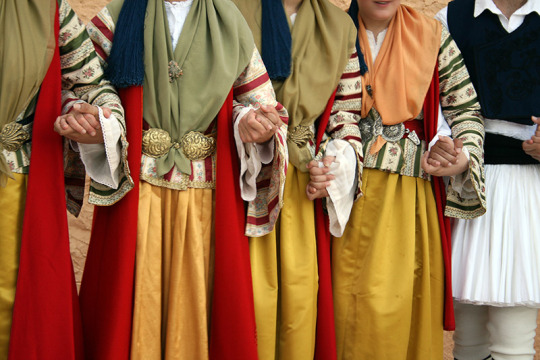
Πηγή:http://www.tsakonianarchives.gr Αξίζει να σημειωθεί ότι, οι μελλόνυμφες και οι νύφες στο Λεωνίδιο, έριχναν στους ώμους τους μία μαντήλα βαθυκόκκινου χρωματισμού που άλλοτε είχε ριγωτό διάκοσμο και άλλοτε φυτικό. Το φορούσαν αυστηρά και μόνο αυτές, μέχρι και στον πρώτο χορό ώς νιόπαντρες. Μόλις τελείωναν τον χορό, το απομάκρυναν με ιδιαίτερη ευλάβεια και το δίπλωναν με τελετουργικό τρόπο για να το δώσουν πάλι στην νύφη του πρωτότοκου γιου ή στην κόρη.
Περαχώρα: Μία από τις πιο ξεχωριστές φορεσιές της Πελοποννήσου
Η φορεσιά της Κορινθίας είναι γνωστή και ως Περαχώρας και τη χαρακτηρίζουν τα ιδιαίτερα κεντήματα κάνοντας την μία από τις πιο μοναδικές φορεσιές της Πελοποννήσου. Τα μέρη που αποτελείται είναι: το μισοφόρι, το ποκάμισο, το σιγκούνι, η τραχηλιά, το ζωνάρι και η ποδιά.
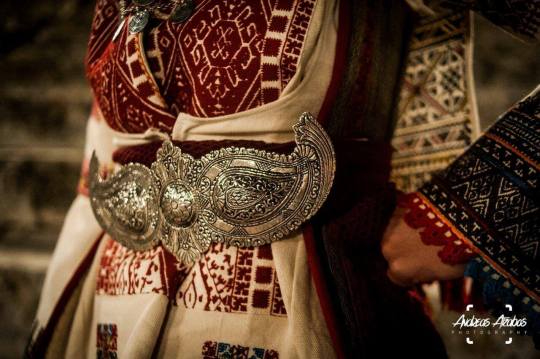
Πηγή: Εργαστήριο παραδοσιακών φορεσιών Το μισοφόρι, το εσωτερικό βαμβακερό ποκάμισο, δεν είχε κεντήματα. Το ποκάμισο ενώ είναι μακρύ, το ονόμαζαν κοντό, γιατί δεν είχε μανίκια. Τα μανίκια προστέθηκαν αργότερα όταν καταργήθηκαν τα κατωμάνικα. Τα κεντήματα που είχε στον ποδόγυρο και στα μανίκια διέφεραν ανάλογα με την περίσταση. Τα κεντήματα της είναι πολύ ιδιαίτερα σε ποικίλους χρωματισμούς και συνήθως γεωμετρικά μοτίβα. Το ζωνάρι ήταν μάλλινο σε κόκκινο ή κρεμεζί χρώμα και τυλιγόταν αρκετές φορές γύρ�� από τη μέση, με τα κρόσσια από τις άκρες να πέφτουν στα πλάγια.
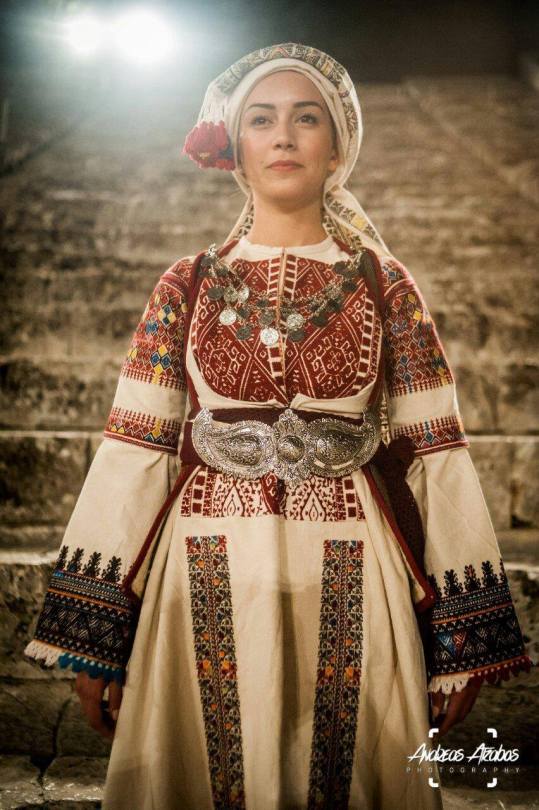
Πηγή:Εργαστήριο παραδοσιακών φορεσιών Στον καθημερινό κεφαλόδεσμο παρατηρούμε το τσεμπέρι όπως συνήθιζαν στις φορεσιές της Πελοποννήσου, βαμβακερό μαντήλι με λουλούδια, που το φορούσαν σε τρίγωνο και τις άκρες γυρισμένες γύρω από το κεφάλι. Από πάνω έβαζαν τη μαντήλια, συνήθως κίτρινη με λουλούδια για τις νεότερες και μαύρη με λίγα λουλούδια για τις ηλικιωμένες. Η μπόλια ήταν βαμβακερή με κεντήματα στις άκρες ,από μετάξι σε κόκκινο, σκούρο καφέ με λίγο πράσινο ή μαύρο. Αργότερα σκέπαζαν με αυτή το κεφάλι και το κεντητό της μέρος ερχόταν στο μέτωπο. Η μια της άκρη στεφάνωνε το κεφάλι και η άλλη έπεφτε στον ώμο. Η μπόλια συνηθιζόταν μόνο στις γιορτινές και νυφικές φορεσιές. Στα κοσμήματα συναντάμε την καδένα ή άλυσες που στόλιζαν το λαιμό και το στήθος και το θηλυκωτάρι που συγκρατεί τη ζώνη, όπως και τα σκουλαρίκια που συμπλήρωναν τη φορεσιά.
Μάνη: οι νησιώτικες φορεσιές της Πελοποννήσου
Πηγή:Αιμιλία Γιαννοπούλου Οι Μανιάτες αν και στεριανοί υιοθέτησαν την νησιώτικη φορεσιά, διότι οι συναλλαγές τους γίνονται από την θάλασσα και όχι από την στεριά. Η γυναικεία μανιάτικη φορεσιά είναι πολύ χαρακτηριστική και την ξεχωρίζουμε ανάμεσα σε πολλές άλλες φορεσιές της Πελοποννήσου. Η φορεσιά λοιπόν αποτελείται από το βελέσι, συνήθως σε σκούρο μπλέ χρώμα, πουκάμισο μακρύ και κεντημένο στα άκρα, από πάνω το κοντογούνι (μπόρκα ή καμιγιόλα), ζώνη, στο κεφάλι τσεμπέρι (ή τσεμπέρα), πολλές φορές κεφαλογιούρι από μέσα και από πάνω το τσεμπέρι, τσαρούχια και μπελερίνα. Το χρώμα της τσεμπέρας ήταν ανάλογο της ηλικίας. Οι μικρότερες φορούσαν άσπρο, κίτρινο ή ανοιχτό καφέ που με την ηλικία σκούραινε και γινόταν μαύρο στα γεράματα.
Το Μαυροφούστανο της Τεγέας
Πήρε το όνομά της από το κυριότερο εξάρτημα της φορεσιάς αυτής που είναι το μαυροφούστανο και την κάνει να ξεχωρίζει από τις άλλες φορεσιές. Αποτελεί μια από τις πιο βαριές και γνωστές φορεσιές της Πελοποννήσου. Το μαυροφούσταvo είναι ένα αμάνικο φόρεμα, ανοιχτό μπροστά στο στήθος, εφαρμοστό στη μέση, από όπου αρχίζουν οι πιέτες. Όλη του η ομορφιά είναι ο ποδόγυρος από κόκκινη τσόχα και πάνω από την τσόχα είναι ένα κέντημα με σταυροβελονιά από πολύχρωμες κλωστές σε διάφορα σχέδια. Οι δύο άκρες του μαυροφούστανου (ποδόγυρου) σηκώνονται μπροστά μέχρι τη μέση και αφήνουν να φαίνονται το μισοφόρι που είναι λευκό, κεντημένο κοφτό, περίπου στο ίδιο μήκος με το μαυροφούστανο.
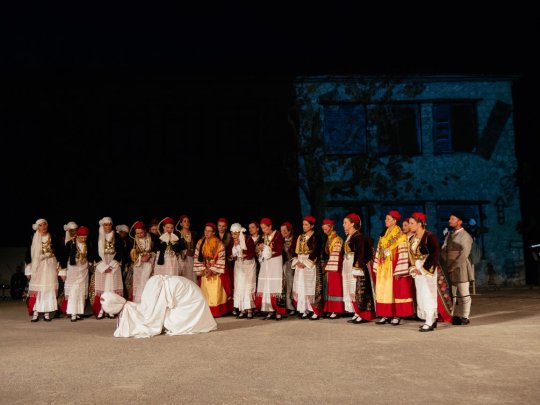
Πηγή: Χορευτικός σύλλογος Τεγέας Πάνω από το μαυροφούστανο φοριόταν το ζιπούνι αρχικά και αργότερα το κοντογούνι. Το κοντογούνι ήταν από τσόχα λεπτή ή βελούδο διαφόρων χρωμάτων με χρυσά κεντήματα ή βελούδο διαφόρων χρωμάτων. Στο στήθος φορούσαν την τραχηλιά. Πάνω από το μαυροφούστανο, μπροστά, φορούσαν την ποδιά συνήθως από μεταξωτό ύφασμα. Στο κεφάλι αρχικά φορούσαν τη μπόλια, ένα μακρόστενο μεταξωτό μαντήλι με κρόσσια στις δύο άκρες και το οποίο έδεναν με διάφορους τρόπους. Αργότερα φοριέται το κόκκινο φέσι, με το χρυσό κορδόνι 0,40 μ. μήκος και μεταξωτή φούντα μήκους περίπου 0,80 μ. το λεγόμενο παπάζι. Σύνταξη κειμένου: Βασιλική Τριανταφυλλοπούλου Επιμέλεια κειμένου: Γεωργία Αλμπανίδου Πηγές: http://mandra.evolution-isa.gr/paradosiakes-foresies/peloponnisou/i-foresia-tis-korinthias http://www.tsakonianarchives.gr/info/outfit/ https://msvf.gr/choreftikos-syllogos-tegea/imatiothiki/ Read the full article
1 note
·
View note
Photo
These are great! Some of those costumes were worn by Greeks in the region!







Traditional costume of Anatolia’s seven regions.
This was a personal project of mine since I took a costume class in university, but I have always been amazed by how such a small land can offer so much diversity! This is my tribute to Anatolia a.k.a Asia Minor! These dresses are merely what I chose to draw -using references of course.
I will share my favorite details from these later. 🌻 🌹
#traditional dress#anatolia#asia minor#turkey#paradosiaki foresia#Pontiac#Pontian#Cappadocian#Smyrna
4K notes
·
View notes
Text
Φορεσιές της Πελοποννήσου: Ταξίδι μέσα στον χρόνο
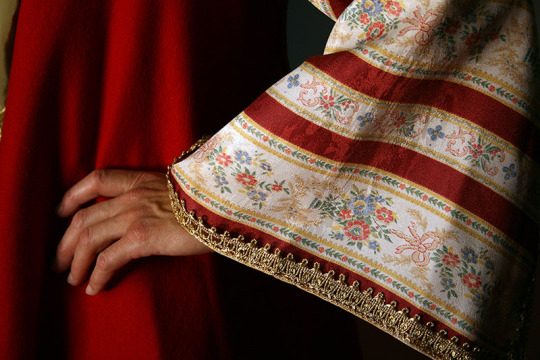
Πως μπορεί κάποιος να γνωρίσει μια περιοχή καλύτερα; Μία ματιά στον παρελθόν της και στην τότε καθημερινότητα της, βοηθούν στην καλύτερη κατανόηση του χαρακτήρα της περιοχής αυτής. Μέσα από τις φορεσιές της Πελοποννήσου, θα μάθουμε για τη νοοτροπία των ανθρώπων ,την ενασχόληση τους, τις γιορτές και τα έθιμα τους. Θα γνωρίσουμε το κλίμα των περιοχών, τον πλούτο που διέθεταν αλλά και την ιστορία τους. Περισσότερη έμφαση θα δοθεί στις γυναικείες φορεσιές της Πελοποννήσου, αφού μέσα από αυτές αντλούμε τα περισσότερα στοιχεία.
Τζουμπές: Η ενδυμασία της Τσακωνιάς

Πηγή:http://www.tsakonianarchives.gr Ο τζουμπές αποτελεί την παραδοσιακή γυναικεία φορεσιά της ευρύτερης περιοχής της Τσακωνιάς. Κατά το παρελθόν, οι αρχόντισσες του Πραστού, συνήθιζαν να φορούν τον τζουμπέ ως ένδειξη οικονομικής επιφάνειας και ανώτερης καταγωγής. Χρησιμοποιούνταν ως νυφικό φόρεμα και χαρακτηριζόταν από δωρική απλότητα. Απαλλαγμένη από χρυσοκέντητα στολίδια και φλουριά, συνδύαζ�� τους χρωματισμούς του κόκκινου, του κίτρινου και του πράσινου. Συγκεκριμένα, οι Πραστιώτισσες τζουμπελούδες αποκαλούνταν και ‘’δαχτυλιδούδες’’, αφού σε κάθε δάχτυλο φορούσαν ένα κόσμημα. Το κόσμημα αυτό αποτελούταν από ζαφείρια, ζουμπρούτια, διαμάντια και μαργαριτάρια. Στο πέρασμα του χρόνου, η Τσακώνικη φορεσιά υπέστη, μικρές παραλλαγές και βελτιώσεις για να φτάσει στην μορφή που γνωρίζουμε όλοι.
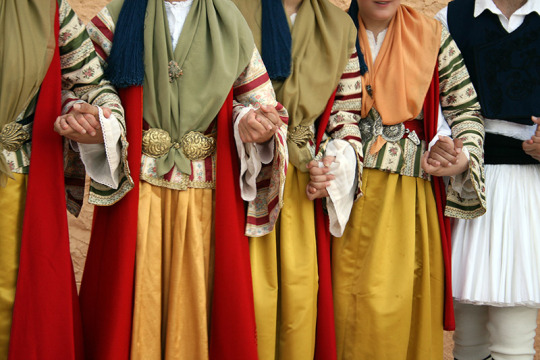
Πηγή:http://www.tsakonianarchives.gr Αξίζει να σημειωθεί ότι, οι μελλόνυμφες και οι νύφες στο Λεωνίδιο, έριχναν στους ώμους τους μία μαντήλα βαθυκόκκινου χρωματισμού που άλλοτε είχε ριγωτό διάκοσμο και άλλοτε φυτικό. Το φορούσαν αυστηρά και μόνο αυτές, μέχρι και στον πρώτο χορό ώς νιόπαντρες. Μόλις τελείωναν τον χορό, το απομάκρυναν με ιδιαίτερη ευλάβεια και το δίπλωναν με τελετουργικό τρόπο για να το δώσουν πάλι στην νύφη του πρωτότοκου γιου ή στην κόρη.
Περαχώρα: Μία από τις πιο ξεχωριστές φορεσιές της Πελοποννήσου
Η φορεσιά της Κορινθίας είναι γνωστή και ως Περαχώρας και τη χαρακτηρίζουν τα ιδιαίτερα κεντήματα κάνοντας την μία από τις πιο μοναδικές φορεσιές της Πελοποννήσου. Τα μέρη που αποτελείται είναι: το μισοφόρι, το ποκάμισο, το σιγκούνι, η τραχηλιά, το ζωνάρι και η ποδιά.
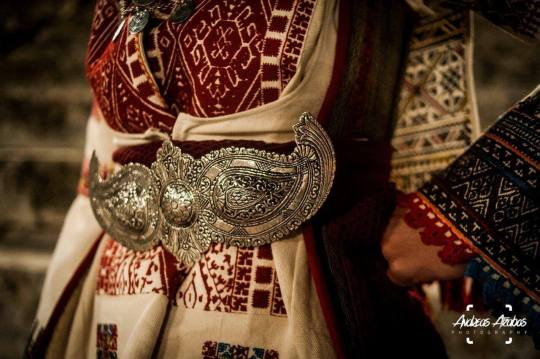
Πηγή: Εργαστήριο παραδοσιακών φορεσιών Το μισοφόρι, το εσωτερικό βαμβακερό ποκάμισο, δεν είχε κεντήματα. Το ποκάμισο ενώ είναι μακρύ, το ονόμαζαν κοντό, γιατί δεν είχε μανίκια. Τα μανίκια προστέθηκαν αργότερα όταν καταργήθηκαν τα κατωμάνικα. Τα κεντήματα που είχε στον ποδόγυρο και στα μανίκια διέφεραν ανάλογα με την περίσταση. Τα κεντήματα της είναι πολύ ιδιαίτερα σε ποικίλους χρωματισμούς και συνήθως γεωμετρικά μοτίβα. Το ζωνάρι ήταν μάλλινο σε κόκκινο ή κρεμεζί χρώμα και τυλιγόταν αρκετές φορές γύρω από τη μέση, με τα κρόσσια από τις άκρες να πέφτουν στα πλάγια.
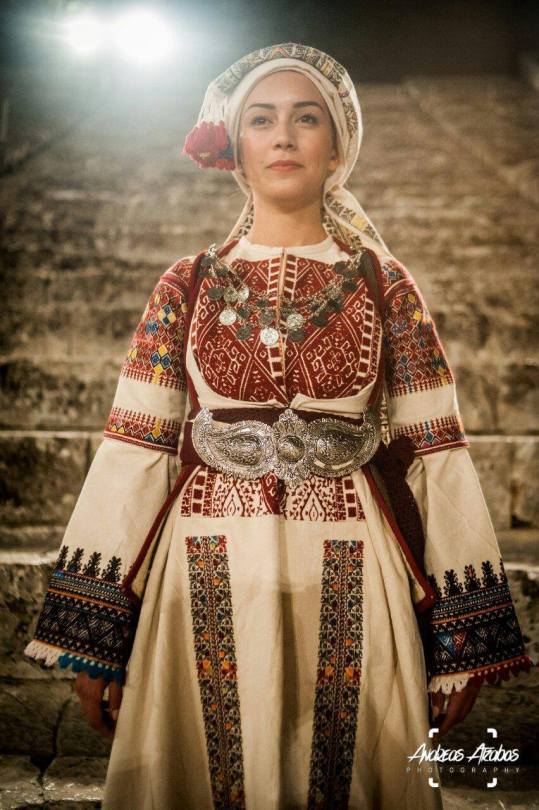
Πηγή:Εργαστήριο παραδοσιακών φορεσιών Στον καθημερινό κεφαλόδεσμο παρατηρούμε το τσεμπέρι όπως συνήθιζαν στις φορεσιές της Πελοποννήσου, βαμβακερό μαντήλι με λουλούδια, που το φορούσαν σε τρίγωνο και τις άκρες γυρισμένες γύρω από το κεφάλι. Από πάνω έβαζαν τη μαντήλια, συνήθως κίτρινη με λουλούδια για τις νεότερες και μαύρη με λίγα λουλούδια για τις ηλικιωμένες. Η μπόλια ήταν βαμβακερή με κεντήματα στις άκρες ,από μετάξι σε κόκκινο, σκούρο καφέ με λίγο πράσινο ή μαύρο. Αργότερα σκέπαζαν με αυτή το κεφάλι και το κεντητό της μέρος ερχόταν στο μέτωπο. Η μια της άκρη στεφάνωνε το κεφάλι και η άλλη έπεφτε στον ώμο. Η μπόλια συνηθιζόταν μόνο στις γιορτινές και νυφικές φορεσιές. Στα κοσμήματα συναντάμε την καδένα ή άλυσες που στόλιζαν το λαιμό και το στήθος και το θηλυκωτάρι που συγκρατεί τη ζώνη, όπως και τα σκουλαρίκια που συμπλήρωναν τη φορεσιά.
Μάνη: οι νησιώτικες φορεσιές της Πελοποννήσου
Πηγή:Αιμιλία Γιαννοπούλου Οι Μανιάτες αν και στεριανοί υιοθέτησαν την νησιώτικη φορεσιά, διότι οι συναλλαγές τους γίνονται από την θάλασσα και όχι από την στεριά. Η γυναικεία μανιάτικη φορεσιά είναι πολύ χαρακτηριστική και την ξεχωρίζουμε ανάμεσα σε πολλές άλλες φορεσιές της Πελοποννήσου. Η φορεσιά λοιπόν αποτελείται από το βελέσι, συνήθως σε σκούρο μπλέ χρώμα, πουκάμισο μακρύ και κεντημένο στα άκρα, από πάνω το κοντογούνι (μπόρκα ή καμιγιόλα), ζώνη, στο κεφάλι τσεμπέρι (ή τσεμπέρα), πολλές φορές κεφαλογιούρι από μέσα και από πάνω το τσεμπέρι, τσαρούχια και μπελερίνα. Το χρώμα της τσεμπέρας ήταν ανάλογο της ηλικίας. Οι μικρότερες φορούσαν άσπρο, κίτρινο ή ανοιχτό καφέ που με την ηλικία σκούραινε και γινόταν μαύρο στα γεράματα.
Το Μαυροφούστανο της Τεγέας
Πήρε το όνομά της από το κυριότερο εξάρτημα της φορεσιάς αυτής που είναι το μαυροφούστανο και την κάνει να ξεχωρίζει από τις άλλες φορεσιές. Αποτελεί μια από τις πιο βαριές και γνωστές φορεσιές της Πελοποννήσου. Το μαυροφούσταvo είναι ένα αμάνικο φόρεμα, ανοιχτό μπροστά στο στήθος, εφαρμοστό στη μέση, από όπου αρχίζουν οι πιέτες. Όλη του η ομορφιά είναι ο ποδόγυρος από κόκκινη τσόχα και πάνω από την τσόχα είναι ένα κέντημα με σταυροβελονιά από πολύχρωμες κλωστές σε διάφορα σχέδια. Οι δύο άκρες του μαυροφούστανου (ποδόγυρου) σηκώνονται μπροστά μέχρι τη μέση και αφήνουν να φαίνονται το μισοφόρι που είναι λευκό, κεντημένο κοφτό, περίπου στο ίδιο μήκος με το μαυροφούστανο.
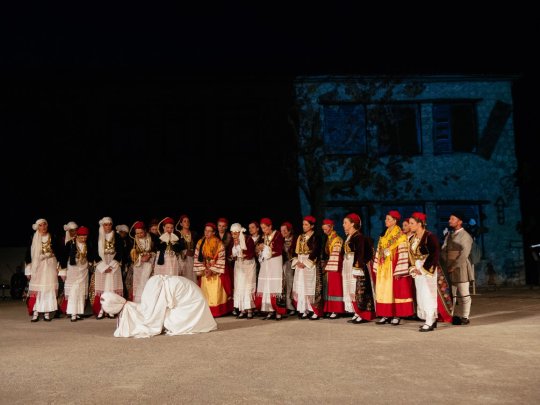
Πηγή: Χορευτικός σύλλογος Τεγέας Πάνω από το μαυροφούστανο φοριόταν το ζιπούνι αρχικά και αργότερα το κοντογούνι. Το κοντογούνι ήταν από τσόχα λεπτή ή βελούδο διαφόρων χρωμάτων με χρυσά κεντήματα ή βελούδο διαφόρων χρωμάτων. Στο στήθος φορούσαν την τραχηλιά. Πάνω από το μαυροφούστανο, μπροστά, φορούσαν την ποδιά συνήθως από μεταξωτό ύφασμα. Στο κεφάλι αρχικά φορούσαν τη μπόλια, ένα μακρόστενο μεταξωτό μαντήλι με κρόσσια στις δύο άκρες και το οποίο έδεναν με διάφορους τρόπους. Αργότερα φοριέται το κόκκινο φέσι, με το χρυσό κορδόνι 0,40 μ. μήκος και μεταξωτή φούντα μήκους περίπου 0,80 μ. το λεγόμενο παπάζι. Σύνταξη κειμένου: Βασιλική Τριανταφυλλοπούλου Επιμέλεια κειμένου: Γεωργία Αλμπανίδου Πηγές: http://mandra.evolution-isa.gr/paradosiakes-foresies/peloponnisou/i-foresia-tis-korinthias http://www.tsakonianarchives.gr/info/outfit/ https://msvf.gr/choreftikos-syllogos-tegea/imatiothiki/ Read the full article
0 notes
Text
0 notes
Text

ΤΡΑΠΕJUDAH CLUB...οοοχι δεν το εγραψεεεεε
18 notes
·
View notes